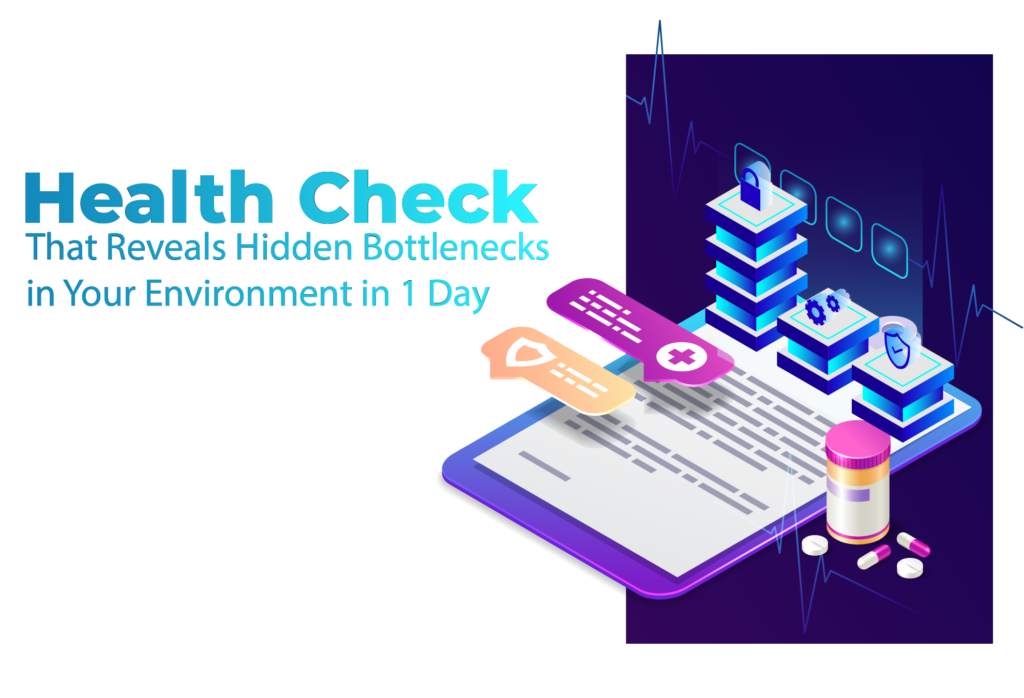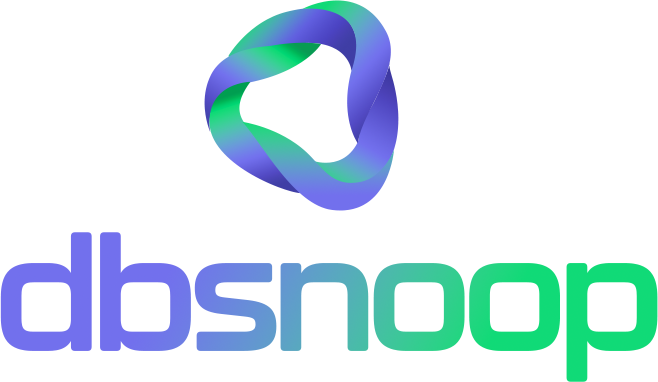

Your IT environment is sending signals that something is wrong. The application experiences intermittent slowness during peak loads, cloud infrastructure costs are progressively increasing without a proportional increase in business volume, and the support team is reporting user complaints that the SRE and DBA teams cannot consistently reproduce. There is a strong suspicion that chronic and unidentified performance bottlenecks are accumulating in the data layer, but the prospect of starting a diagnosis is paralyzing.
The traditional method of performance analysis is a project in itself: it consumes weeks of senior engineers’ work, requires the implementation of invasive tracing scripts, generates terabytes of logs, and, in the end, may not produce a clear action plan.
The alternative to this slow and costly process is a diagnosis accelerated by Artificial Intelligence. The dbsnOOp Health Check was designed to condense weeks of performance analysis into a 24-hour cycle. Using the same technology as the Autonomous DBA, the service offers a deep and non-intrusive analysis of your database environment, resulting in an actionable intelligence report.
It is not continuous monitoring, but a high-precision biopsy, designed to reveal the root cause of performance problems, quantify their impact, and provide a prioritized optimization plan.
Limitations of Traditional Performance Diagnosis
To understand the value of an accelerated diagnosis, it is crucial to first understand why traditional methods fail in modern environments.
The Ineffectiveness of Threshold-Based Monitoring for Diagnosis
Classic monitoring tools are built on threshold alerts (e.g., CPU > 90%). These systems are designed to detect total failures, not subtle degradations. They can inform you that a server is overloaded, but they are incapable of explaining the root cause. Trying to diagnose a performance bottleneck by looking at CPU, memory, and I/O dashboards is like trying to diagnose a complex disease using only a thermometer. It can confirm the fever, but it offers no clues about the infection that is causing it.
The Complexity of Distributed Environments and Microservices
In a modern architecture, systems are not monolithic. A single user transaction can traverse multiple microservices, each with its own interactions with different databases or schemas. A performance problem is rarely contained within a single component. The slowness in a checkout service might be caused by a degradation in an authentication service it depends on. Manually tracing this chain of dependencies and latencies through logs from different systems is a complex, time-consuming, and error-prone forensic process.
The Silent Accumulation of Database Technical Debt
Most critical performance bottlenecks do not arise from a single code change. They are the result of the gradual accumulation of “technical debt.” A query that was perfectly efficient when the orders table had 1 million rows becomes an I/O bottleneck when the table reaches 100 million records. The query’s execution plan, once optimal, becomes obsolete. This degradation is silent and incremental. Traditional tools, which do not perform behavioral trend analysis, are blind to this type of “chronic disease” until it manifests as an acute incident.
The dbsnOOp Health Check: An AI-Accelerated Diagnostic Service
The dbsnOOp Health Check is a fast and focused diagnostic service. It was designed for companies that need clear answers about the health of their databases without the cost and time of a long-term consulting project.
Objective and Scope: What is Delivered in 24 Hours
The objective of the Health Check is to provide, in one business day, a complete report that identifies the main performance bottlenecks, analyzes their root causes, and presents a prioritized optimization plan. The scope of the analysis covers the entire spectrum of database performance, from infrastructure configuration to the execution of individual queries.
Non-Intrusive Setup and Data Collection Process
The implementation is designed to be fast and secure, with minimal overhead on the production environment:
- Collector Installation: A lightweight data collector is installed on a machine with network access to the database. The process does not require the installation of heavy agents on the production server and takes minutes.
- Access Permissions: The collector operates with “read-only” permissions on the data dictionary and performance views of the database (e.g., v$session in Oracle, pg_stat_activity in PostgreSQL). It does not access the client’s business data, ensuring total security and compliance.
- Data Collection: For 24 hours, the platform collects tens of thousands of data points per minute, including operating system metrics, database wait statistics, snapshots of active sessions, and query execution plans.
- AI Analysis: The collected data is processed by the Autonomous DBA’s AI engine, which performs the correlation and root cause analysis.
The Technical Methodology of the dbsnOOp Diagnosis
The effectiveness of the Health Check lies in the systematic and multi-layered methodology that the AI uses to analyze the collected data.

Workload Analysis and Behavioral Baseline Construction
The first step of the analysis is to understand the unique “personality” of your workload. The AI processes the collected data to build a detailed baseline, identifying:
- Access Patterns: Transactional peak hours, execution windows for batch processes (ETLs, backups), and periods of low activity.
- Most Frequent Queries: Identifies queries that, although they may be fast individually, are executed millions of times and, collectively, represent a large part of the total load.
- Heaviest Queries: Isolates queries that, even if executed only a few times, consume a disproportionate amount of resources (CPU, I/O).
Bottleneck Identification with the Top-Down Diagnosis
This is the core functionality for root cause analysis. For each period of slowness or high resource consumption identified in the baseline, the AI applies a diagnostic approach that descends through the layers of the stack:
- Infrastructure Layer: Identifies the physical symptom, such as high disk write latency (log file sync wait) or 100% CPU.
- Database Layer: Correlates the physical symptom with the wait events and active sessions within the database at that exact moment.
- Application Layer: Isolates the specific SQL query, user, and application that were being executed by those sessions and are the cause of the resource contention.
Large-Scale Query Execution Plan Analysis
The diagnosis doesn’t stop at identifying the slow query; it delves into why it is slow. The AI analyzes the execution plans of thousands of queries to find systemic inefficiencies:
- Full Table Scans: Identifies queries that are reading entire tables when they could be using an index for direct and much faster access.
- Incorrect or Missing Indexes: Detects queries that could benefit from a new index or that are ignoring an existing index due to outdated statistics.
- Inefficient JOIN Operations: Points to JOINs that result in Cartesian products or use suboptimal join methods (e.g., Nested Loops on large tables).
Detection of Resource Contention: Lock Waits and I/O Bottlenecks
Contention bottlenecks are notoriously difficult to diagnose manually. The dbsnOOp AI analyzes wait event data to identify the main “congestion” points, answering questions like:
- Which objects (tables, indexes) in the database suffer the most from lock contention?
- Which processes are blocking others and for how long?
- Is the I/O bottleneck in the data files, the log files, or the temporary files?
The Actionable Intelligence Report and the Optimization Plan
At the end of the 24 hours, the result is not a complex dashboard, but an intelligence report designed for action.
Report Structure:
- Executive Summary: An overview of the environment’s health and the main findings.
- Workload Analysis: A detailed profile of your database’s behavior.
- Top 10 Queries by Resource Consumption: Prioritized lists of the queries that consume the most CPU, I/O, and execution time. For each query, the report includes its execution plan and an analysis of its inefficiency.
- Infrastructure Bottleneck Analysis: Details of lock contention issues, I/O bottlenecks, and other resource limitations, with the identification of the causing processes.
- Prioritized Optimization Plan: A list of concrete and actionable recommendations, such as “Create index X on table Y,” “Update statistics on table Z,” “Rewrite query W to avoid a full table scan.” The recommendations are prioritized by their expected impact.
The Return on Investment (ROI) of the Health Check
The value of the Health Check manifests on multiple fronts:
- Incident Risk Mitigation: By revealing the “time bombs” in your environment, the Health Check allows you to defuse them before they cause a critical incident, protecting business continuity.
- Cloud Cost Optimization (OpEx) and TCO Reduction: Optimizing the most expensive queries results in lower resource consumption, which translates into a measurable and often immediate reduction in your cloud bill.
- Empowerment of the Technical Team: The Health Check eliminates weeks of frustrating investigative work. It delivers a clear plan, allowing the team to focus their time and talent on solving problems, not just identifying them.
In summary, the dbsnOOp Health Check is the fastest and most efficient way to transform uncertainty about your system’s performance into a concrete, data-driven action plan.
Want to solve this challenge intelligently? Schedule a meeting with our specialist or watch a live demo!
Schedule a demo here.
Learn more about dbsnOOp!
Learn about database monitoring with advanced tools here.
Visit our YouTube channel to learn about the platform and watch tutorials.

Recommended Reading
- Banks and Fintechs: How AI Detects Fraud Before It Happens: A performance Health Check is essential for financial systems, where latency can mean lost transactions. This article about the fintech sector illustrates the need for a high-performance data infrastructure, the exact state that a Health Check helps to achieve and validate.
- AI in Retail: How to Forecast Demand and Reduce Dead Stock: For an AI model in retail to work, the underlying data needs to be accessed quickly and reliably. This post shows the end application of performance. The Health Check serves as the fundamental diagnosis to ensure that the data infrastructure can support these advanced applications.
- Industry 4.0 and AI: The Database Performance Challenge and the Importance of Observability: In Industry 4.0, a database bottleneck can stop a production line. This article highlights the criticality of performance in industrial environments. A Health Check is the ideal tool to proactively identify and eliminate the bottlenecks that could lead to costly production stoppages.

